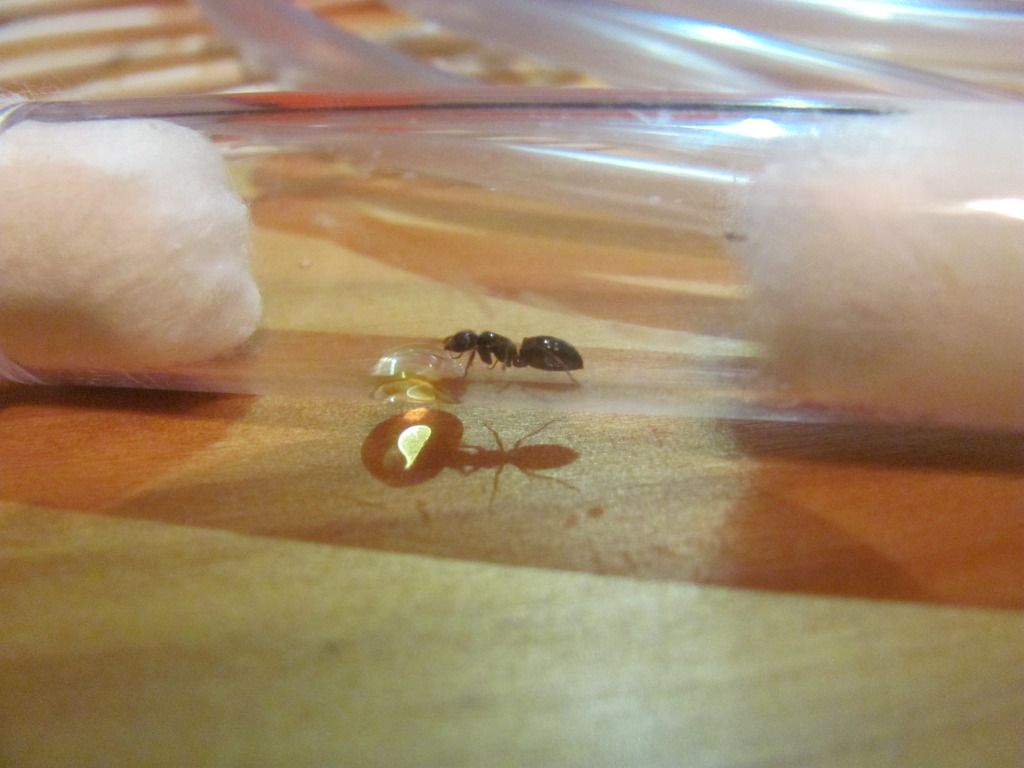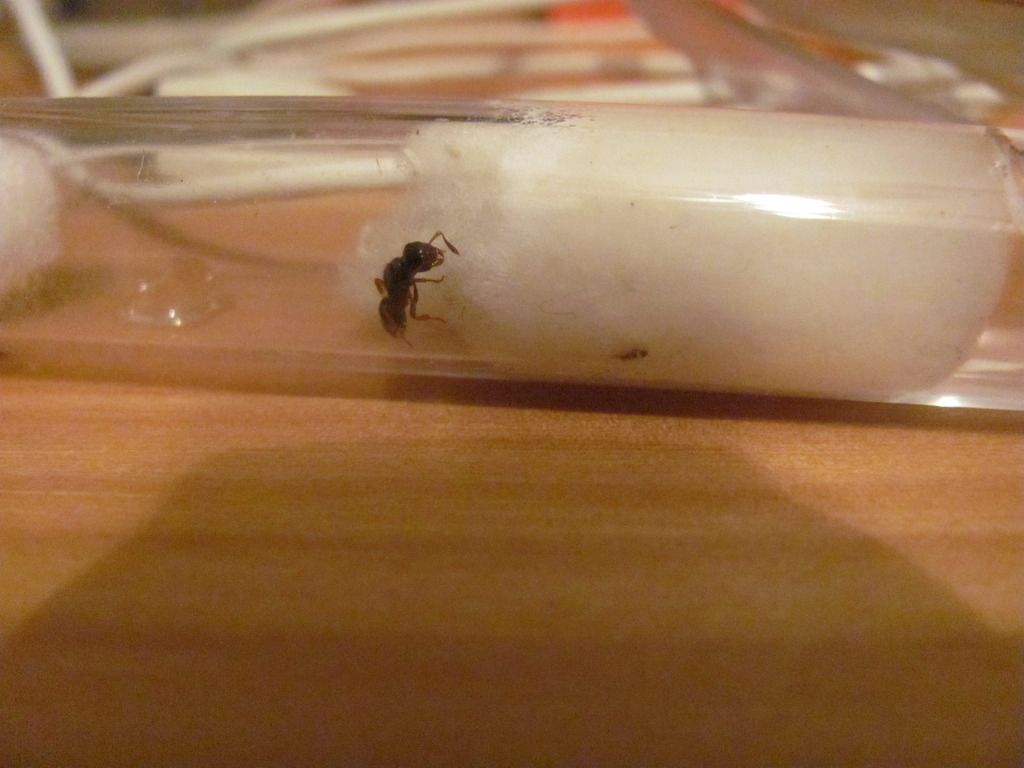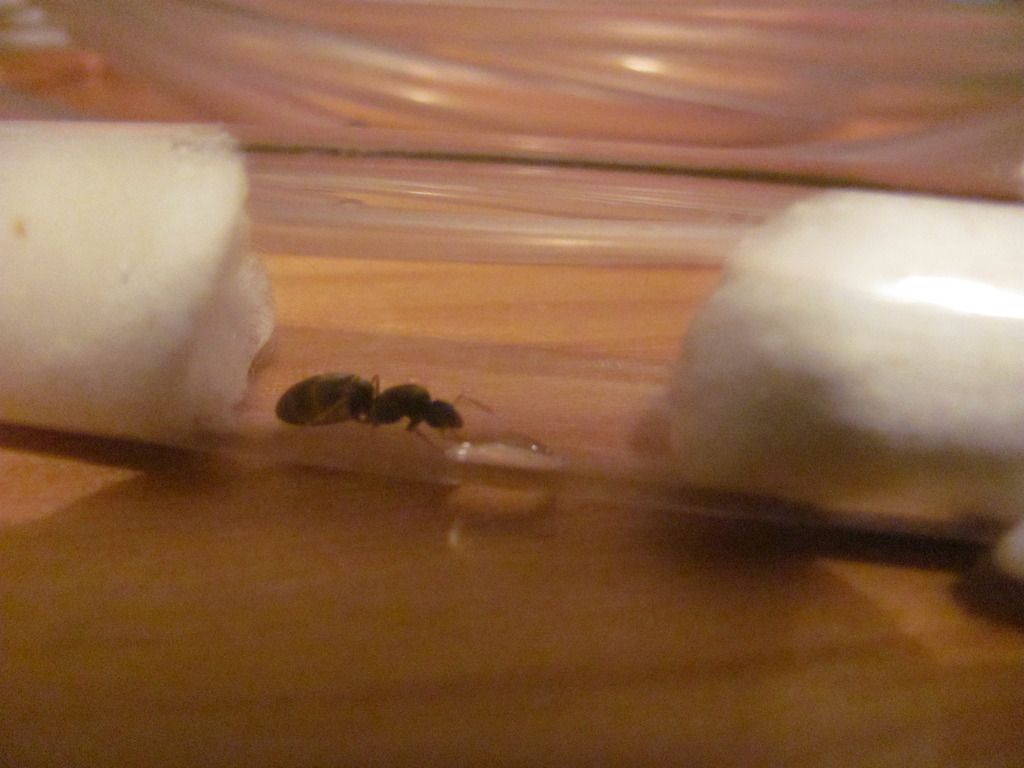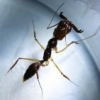12/15/2017
I have never been more excited. I just took all of my Lasius queens out of hibernation a few days ago. It was a bit early and they only got just over two months, but I swear I'd go crazy if I waited a day longer. I will raise these colonies, my first ever colonies, to the best of my ability with my long-awaited task looming: To start a Social Parasite colony. It will be a rough ride, and it is no easy accomplishment, but I'm going to try it.
Here are all my queens (no brood yet)
-9x Lasius (niger-group) sp/spp. (host)
-3x Lasius cf. umbratus (temporary social parasite)
-1x Lasius claviger (temporary social parasite)
I'm hoping to start catching Lasius interjectus (TSP) at the beginning of ant season. They are very early flyers for Lasius apparently. I will also be looking out for Lasius alienus (H) in the fall and summer. I think it is unlikely any of my queens are L. alienus, since I caught most of my queens on the beach, and L. alienus prefer forest habitats. More than likely, all of my host queens are L. neoniger (H). Another possibility is L. pallitarsis (H), but they also prefer a forest habitat.
My plan is this: I will use the callow method for host introduction, with one of my host colonies in place of the host worker sample. Here it is from BatSpiderFish's "Much ado about the founding of Lasius temporary social parasites" topic (I highly suggest reading that if you don't know what Social Parasites are):
The callow method:
A small sample of host workers and a manageable number of pupae are kept in a test tube setup in such a way that a fine paintbrush or toothpick can reach all the way to the wet cotton bung. The queen(s) are kept in another test tube setup.
The worker's tube is given access to a small foraging arena so they may feed themselves.
As pupae mature, the host workers will open up the cocoons to eclose young, callow workers.
After a callow ecloses, very carefully and gently coax the callow onto your paintbrush or toothpick and remove her from her sisters. If any mature workers come with her, place those back in the tube.
The callow worker is introduced to the social parasite queen. There is unlikely to be any hostility. Offer a tiny sugar meal.
After the parasitic queen has a decent number of workers, boost the her with some more of the host's brood. The original adult host workers (that you did not introduce) can be released back to their colony, and the callow workers can take over brood care.
Pros:
This method has the potential to introduce a queen to a host sample without any casualties.
Callow workers are not aggressive, and will imprint upon the queen.
Cons:
It can take some time. If the social parasite species is prone to mysterious death, this can happen while the queen is alone in her tube. Make sure she gets the opportunity to feed, but keep the tube clean.
It can days, weeks, or months before your queen begins to lay her first eggs. There could be something going on behind the scenes during this time; for whatever reason, a parasitic queen with a usurped colony will not always begin laying straight away. Once she has her first egg, however, the most difficult phase of her life is basically over; it is a sign not only that she is fully accepted by her host workers but that she is adapted to captivity, in good health, and is finally ready to begin her colony. While there are still a few hurdles to overcome, you can now relax or celebrate. Since your queen already has a selection of host workers to keep her fed, she will begin to produce eggs to match the hypothetical age of the colony (a 50 host worker colony will cause her to lay eggs as if she is already about one year old, etc.)
One thing that can be said for temporary social parasitism is that while a queen will get a huge amount of free labor, it isn't exactly of the best quality; it's a rather tumultuous time in the colony's life. During the early stages, host workers are rather aggressive, careless, or confused when they interact with members of the parasite species (and vice versa.) Brood of one species can be eaten or neglected by the other. Workers will be bullied and occasionally killed to be fed to the larvae. These behaviors may be an immunity response of the host species to the ants who parasitize them. Once the first parasite worker successfully matures, the situation usually changes for the better.
Like I said, the host worker sample will be one of my colonies. I will take callows from the colony as well as the brood for brood boosting. Instead of a formicarium for the hosts, I may just use a container with a bunch of test tubes in them so brood and callows are easily accessable.
As of yesterday, none of my queens have brood but I'm expecting it any day now. Can't wait! I also gave every queen a drop of Sunburst Ant Nectar, slurped that stuff right down! I check on them every Saturday. Tough to resist checking on them but I manage somehow.

Lasius cf. umbratus gorging herself on some Sunburst. (another possibility is L. speculiventris (TSP)

Lasius claviger basking on her cotton ball. She loves that thing.

Lasius (niger-group) sp. also enjoying some Sunburst.
This will be a very tedious journal. I may even capture on video the introduction if I manage to get hold of a better camera (that actually takes video and has a macro setting, for god sakes! ![]() ) Thanks for reading, next update will be written at the minimum of next Saturday.
) Thanks for reading, next update will be written at the minimum of next Saturday.
Edited by Nathant2131, May 9 2017 - 8:00 AM.



























